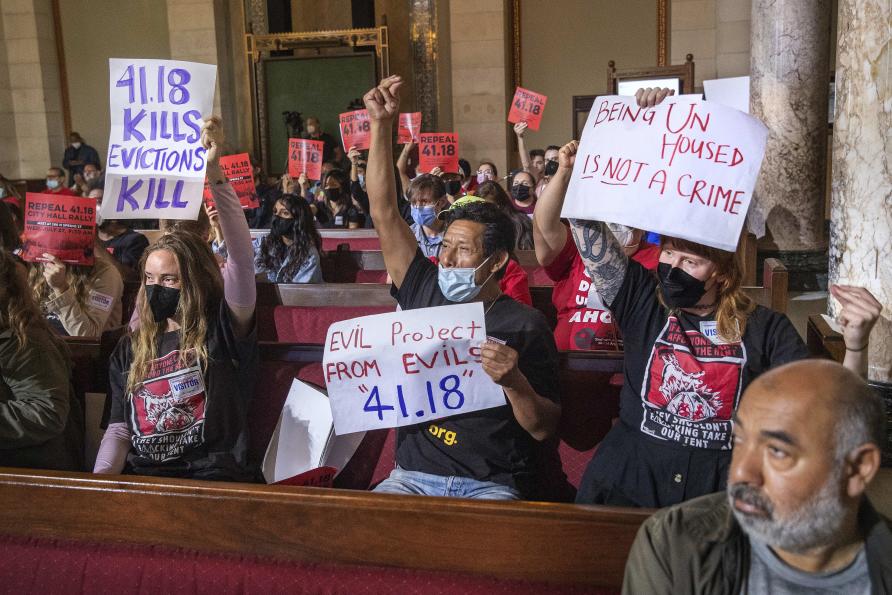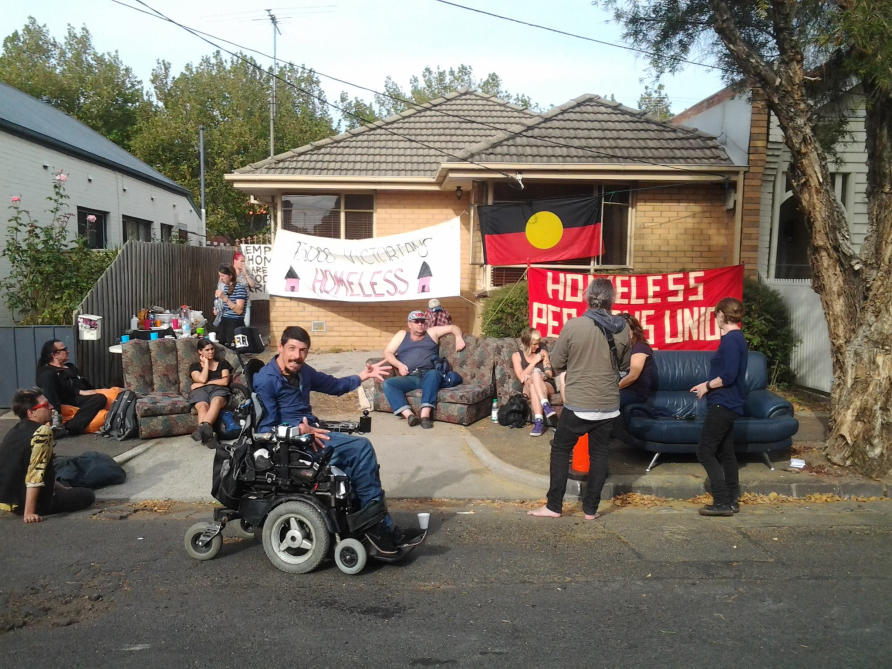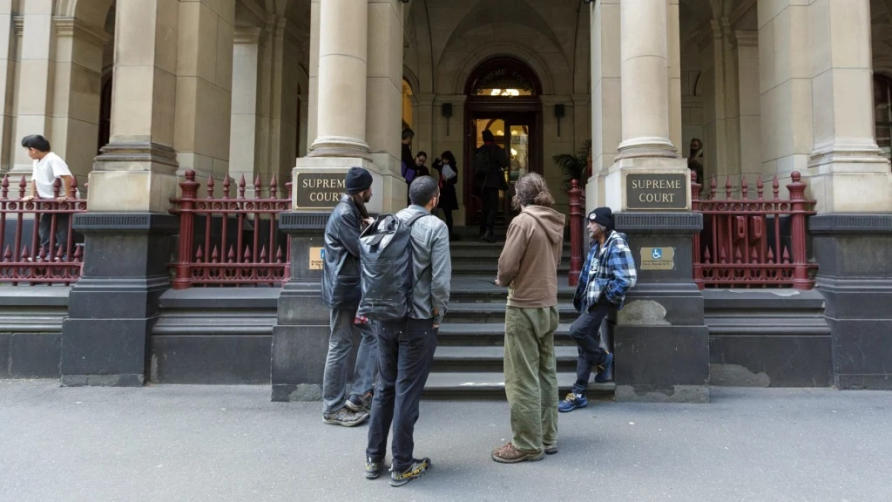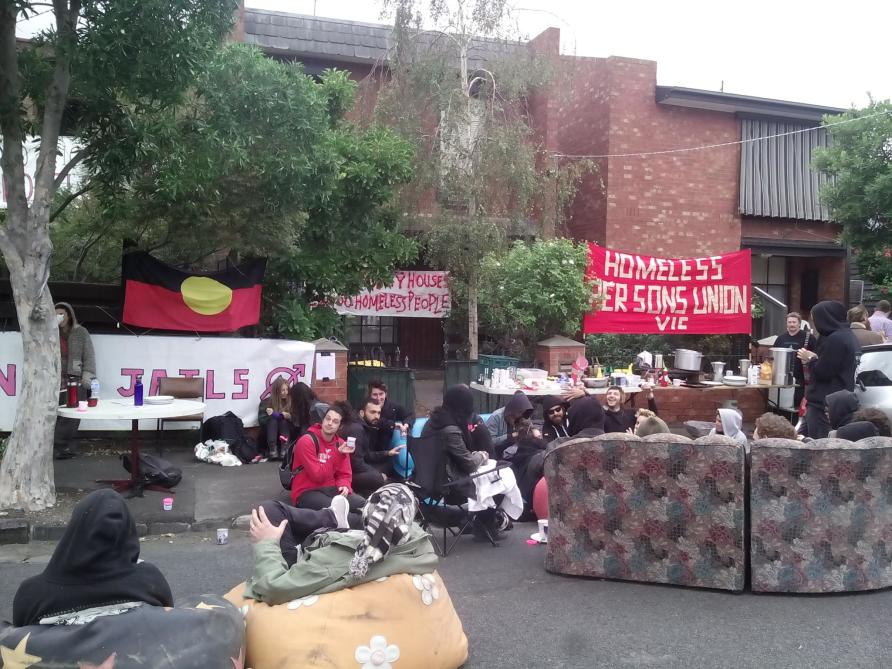The Bendigo Street occupation shows that housing activists and local governments can better work together to pursue housing justice.
This article by Kelly Whitworth and Mike Collins from the Melbourne Social Equity Institute's Community Fellows Program was first published on Pursuit on 2 May 2023 – read the original article. Mike and Kelly were mentored by Associate Professor Crystal Legacy.
The availability of safe and affordable housing is a worldwide crisis, with the World Bank estimating that 1.6 billion people will be affected by 2025.
In Australia, the media regularly reports on the lack of housing supply, but there has been little discussion about the one million houses recorded as vacant in Australia or community actions that improve access to housing.

Occupation as protest
‘Squatting’, or occupying a vacant home without permission from the owners, has a long history and in recent years we have seen international examples of occupation of vacant homes as an overt form of political protest.
This includes the 15M movement in Barcelona that has led to major housing policy changes in that city, Squat City in Dublin and the activities of the Los Angeles Tenants Union.
In Melbourne, Australia, the 2016 occupation of Bendigo Street, Collingwood brought attention to systemic housing injustice and the management of public housing in the state of Victoria.
The action became an important moment in the history of housing rights in this country.
Occupation on Bendigo Street
The Bendigo Street occupation from March to November 2016 provided a rare example of Australian housing activism in both its impact and scale.
The occupation centred on some of the 300 dwellings that had been compulsorily acquired by the state government to make way for a proposed 6 km freeway called the East-West Link. This project was controversial and was ultimately cancelled in 2014 following a change of government, leaving the acquired houses empty.
The local Yarra City Council called for the state government to retain the houses as social housing, but their pleas went unheeded for over two years.

Separate from the Council’s work, local activists staged a political protest, occupying the houses to highlight the fact they were left empty. Following this protest, people seeking housing moved into some of these homes.
Across the campaign, up to 15 houses were occupied and up to 60 people were housed including children and families.
In our research conducted through the Melbourne Social Equity Institute Community Fellows program, we spoke to housing activists, local government staff and councillors to learn about the relationship between policy, government and housing justice.
We drew from our direct experience of the occupation as a local government housing policy officer and a housing activist who both have lived experience of homelessness and public housing.
When the occupiers moved in, the state government rejected the legitimacy of their claims and sought to discredit the activist campaign. Five months after housing was occupied, the state pursued eviction orders resulting in legal contests that ultimately led to the forced eviction of the occupiers.
Meanwhile, the relationship between activists and the local council evolved in a more complex fashion. Once the occupiers moved in, the Council moved from strident advocacy to providing practical support such as access to community venues for meetings or rallies and traffic management for community festivals held along Bendigo Street.
Despite this support from sections of the Council, the lack of coordination between the Council and housing activists left the activists feeling uncertain and isolated.

To better understand this relationship between local government and activists, we asked people on both sides about their experiences and what lessons we can learn from this protest.
Our interviewees held different opinions about the success of the Bendigo Street occupation, but most felt it had some positive outcomes.
For those in local government, the focus the occupation put on the affordable housing crisis was unprecedented. As one local government interviewee put it, “they pulled up the carpet and no one could deny what was underneath”.
The activists’ work brought visibility to their cause and a sense of pride in being part of making change. As a direct result of this action, many of the previously homeless occupants were housed in public housing elsewhere in Melbourne even though the occupied houses were eventually sold on the private market.
However, the advocacy campaign was exhausting, and the hard-line response from authorities caused significant distress.
“So it cost us. I probably need 40 years of therapy,” one activist said.
But Bendigo Street wasn’t just a protest, it was also a practical action that housed up to 60 people. The occupation demonstrated that there is a strong reservoir of community energy and solidarity that will support such actions, but that these reserves have limits.

A need to bridge housing activism and government
The experience of the Bendigo Street occupation prompts questions about how housing activists and local governments can better work together.
Local government’s role could be transformative if it were to actively pursue housing justice, however, this potential is largely untapped.
Activists need to better understand how local government works. For example, they need to know that however supportive an individual council officer may be, it is the elected councillors who have the power to champion a cause over a sustained campaign.
Attracting a busy councillor’s attention isn’t easy, and councillors rely on often cautious local government managers for advice.
Knowing the best approach requires familiarity with policy priorities, processes, and organisational structures. It also requires focus and curiosity, recognising that each local government will have its own distinctive dynamics.
Local government is the level of government closest to the people, but it may make risk-averse choices based on political and practical factors. It can also choose to be a powerful ally for housing justice once an ‘enabling environment’ is switched on.
The City of Yarra made meaningful contributions to the achievements of the Bendigo Street action. There are many types of effective support local government can offer, such as on-the-ground logistics support for campaigns and deploying in-house communications and engagement resources to raise community awareness and cultivate political will.

However, councils need to recognise that community advocacy is not something to be controlled, but something to be part of.
The struggle for housing justice continues to be stymied by limited will in government and a focus on market-based solutions.
Bendigo Street demonstrates the potential for a revived relationship between local government, people in housing precarity and housing activists to foster the political will needed to address the housing crisis.
As part of the Community Fellows Program, Mike Collins and Kelly Whitworth were supervised by Associate Professor Crystal Legacy.
![]()
More Stories
-
Eradicating Modern Slavery in Australia
Alongside its review of the ‘Modern Slavery Act’, the Government must also address the risks of forced labour that are inherent in our visa system.
-
Trauma Informed Practice in Education
A new resource to support trauma informed practice in education has been published by Rebecca Harris, a Melbourne Social Equity Institute Community Fellow from Carlton Primary School.
-
Developing New Research Partnerships to Support Adult Learners from Refugee and Migrant backgrounds
Community Fellow Hayley Black and Dr Julie Choi from the Melbourne Graduate School of Education are developing new methods for teachers and graduate educators, which they are keen to share and expand with both of their professions.
-
Ending the Exploitation of Refugee and Migrant Workers
Getting work is the most important step to successful settlement in a new country, says lawyer Catherine Hemingway, but for people who have recently arrived in Australia it can also be the start of a lot of new problems.